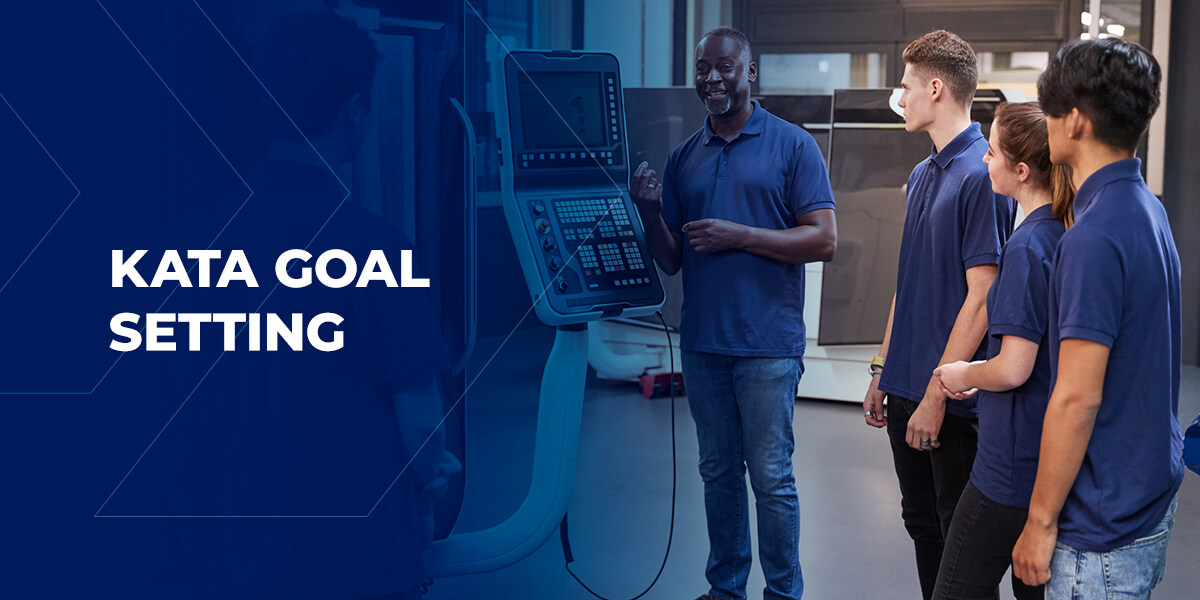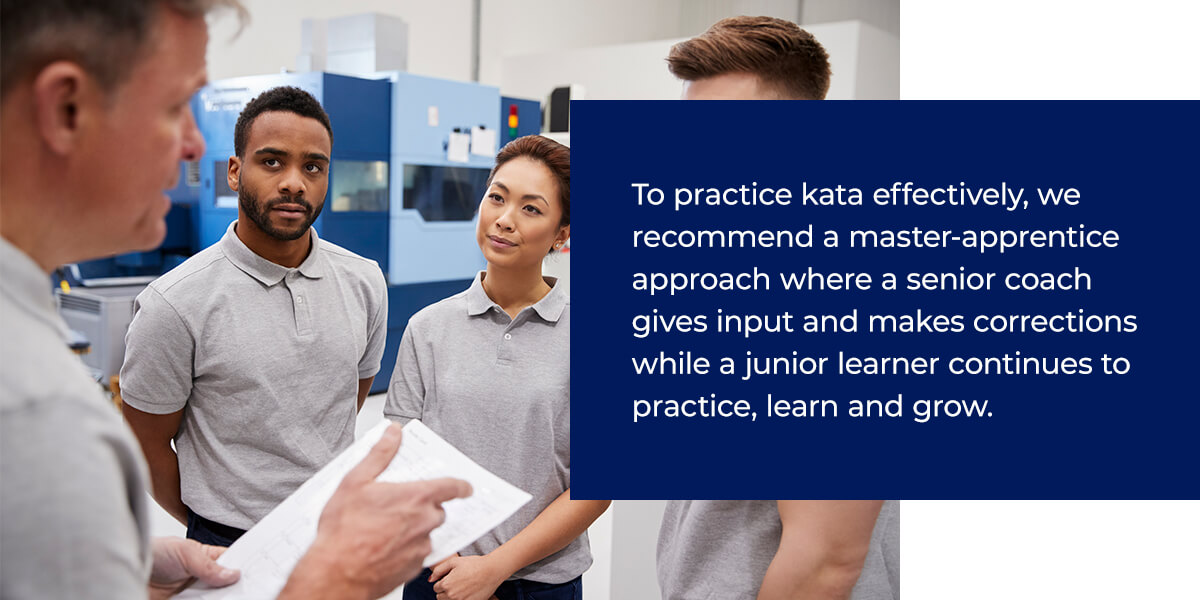Struggling to manage multiple payment systems for different business needs (B2B, B2C, D2C)? Payment Hub…

Table of Contents:
- Improvement Kata and Kata Goal Setting in Manufacturing
- Kata Coaching at Work
- How Can I Practice Kata?
- How Does Kata Improve Our Current Way of Thinking?
The difference between a successful company and an unprofitable one begins at the organization’s foundation, which is its people. A company that develops its employees by using facts and data to drive decision-making can dramatically increase its rates of success.
Promoting data-driven decision-making helps companies become more knowledgeable and collected, which enables them to be more competitive and thrive when encountering obstacles. This process is known as “kata,” a Japanese word that translates to “a structured way of doing things.”
Using kata as a framework for success can help stabilize an organization and its people while guiding them through periods of uncertainty. As a result, kata can offer you a potential advantage over competitors. This article will discuss the benefits of kata goal setting and how it can improve your company’s bottom line.
Improvement Kata and Kata Goal Setting in Manufacturing
Kata revolves around four steps that help guide an organization’s management and employees through a continuous journey of improvement. With these steps, you can utilize improvement kata in manufacturing and coaching. The steps are as follows:
1. Understand the Challenge
Sometimes a challenge facing an organization is readily apparent, such as an economic recession or a pandemic. But often, a challenge hides in plain sight. The first step of kata is to identify the challenges an organization currently faces and may face in the future using metrics such as data, science and numbers.
2. Grasp the Current Condition
Once your organization has identified the challenges you’re facing, the next step is to understand where your company is currently. To gain clarity about your company’s current position, look ahead to where you want to be and identify the obstacles that stand between you and your goals. This enables your company to plan an effective strategy to reach your target goal and condition.
Your work toward your end goal, like any journey, may have bumps along the way. This is completely normal —and the unknowns of the journey are part of the learning process. Becoming knowledgeable about an unknown makes it known and more accessible.
3. Establish the Target Condition
A target condition is a fancy phrase meaning a “goal.” Every well-run organization should have clear goals and objectives as well as a specific plan to reach them. Your first target condition should be a goal you can accomplish in a short period of one to two weeks. When choosing the goal, ensure it will be a piece of the puzzle in reaching your ultimate goal.
Once you have completed this first target condition, you’ll be one step closer to reaching the ultimate goal of your organization. An example would be to have an ultimate goal of 1 million conversions in 10 years. Your first target condition to get closer to this ultimate goal might be to gain five conversions in two weeks.
4. Experiment Toward the Target Condition
The final step of kata is to choose an obstacle currently preventing you from reaching your target condition. You can consider possible solutions to overcoming this obstacle and give them a try. If your solution is successful, you’ve overcome the obstacle. If your solution hasn’t helped you hurdle the obstacle, you’ve still learned valuable information about the obstacle that you can apply to your next experimental solution.
Kata Coaching at Work
One of the most beneficial aspects of kata is that you can teach and learn it easily. To practice kata effectively, we recommend a master-apprentice approach where a senior coach gives input and makes corrections while a junior learner continues to practice, learn and grow.
This master-apprentice approach helps employees gain continuous improvement while strengthening relationships between senior and junior employees. To be most effective, every employee in the organization, from the CEO to the newest and most inexperienced employee, should encourage daily developmental improvements through their actions.
How Can I Practice Kata?
To master kata fully, you need to practice it deliberately and repetitively over a long period of time. Kata takes dedicated practice as every time you apply it, you learn something new. You can apply kata practices in your business through attention to company philosophy and culture. Implementing kata can help an organization develop skills, habits and ideologies that shift individual mindsets and the corporation’s culture toward continuous improvement.
Learners can effectively practice kata by reviewing what their kata coach has done and what they have learned and setting future goals for themselves based upon those goals. Kata coaches can practice kata by continuously implementing improvements from previous lessons and guiding learners through process improvement.
The most important thing to remember when it comes to kata is never to grow complacent with the status quo. Always strive to be better and to find things that you can improve upon. This helps ensure you and your organization are moving forward and toward your goals.
How Does Kata Improve Our Current Way of Thinking?
Kata teaches that the path toward overcoming an obstacle is through constant experimentation and learning. This philosophy impacts our way of thinking by teaching that developing new positive habits can help us navigate challenges and find solutions.
As companies age and succeed, senior leadership may grow complacent with results and lose sight of their original purpose and goals. Successfully practicing kata can help ensure your end goal is always within sight. With kata’s philosophy, once you reach your target goal, you will continue to learn and grow and create more goals for the future.
Kata’s practice of encouraging constant improvement and scientific-based thinking can help employees and organizations stay focused and calm during a crisis. A focused organization can set goals and adapt its operational timelines to better adapt to internal and external changes.
Kata-based philosophy can help you accomplish achievable goals daily and allow experimentation that leads to better knowledge and continual learning. Employees can practice positive repetitive processes that lead to high-quality results benefiting organizations and their long-term goals.
Trust MANTEC With Solutions for Your Manufacturing Business
If you’re looking for assistance with changing your company’s culture, kata may be the solution your company needs. When you want to shift your organizational mindset, productivity and goal setting, partner with MANTEC as your manufacturing service provider.
At MANTEC, we are dedicated to meeting the needs of enterprises in south central Pennsylvania through nonprofit manufacturing and problem-solving services. We offer numerous external and internal solutions to help your business run more efficiently and increase your profitability.
Contact MANTEC to learn more about the benefits of utilizing kata for your organization today.




